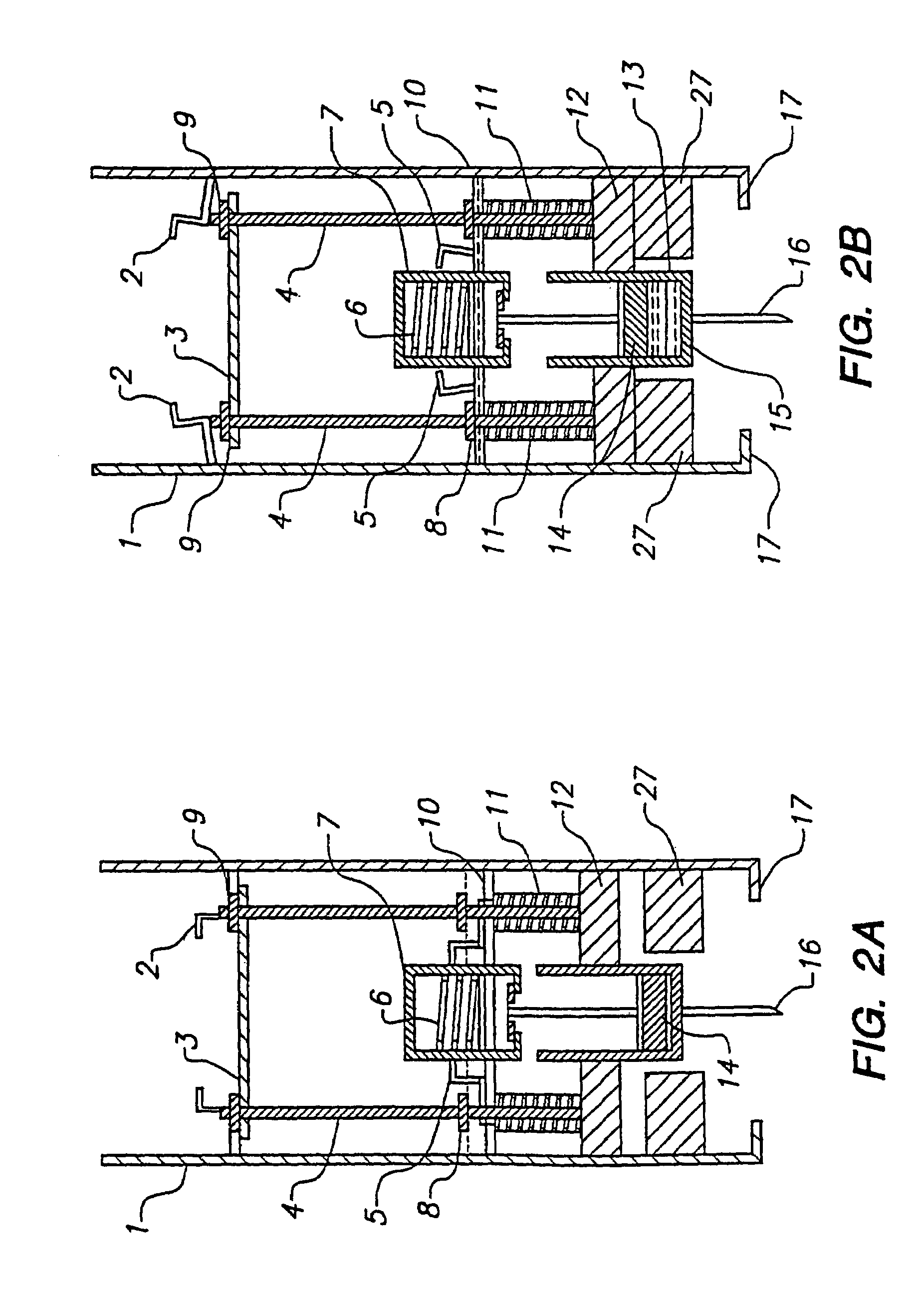Blood and interstitial fluid sampling device
a sampling device and interstitial fluid technology, applied in the field of blood and interstitial fluid sampling devices, can solve the problems of difficult blood transfer directly to the sampling device, less likely to provide excellent blood samples, and significant pain in many patients, so as to improve the sensation of feeling, improve the momentary blood flow, and avoid the effect of bleeding
- Summary
- Abstract
- Description
- Claims
- Application Information
AI Technical Summary
Benefits of technology
Problems solved by technology
Method used
Image
Examples
Embodiment Construction
[0079]FIG. 1 illustrates a minimally invasive sampling device according to the invention. The device is comprised of numerous components which will be more fully described below. The main body 1 supports the various mechanical components housed within the device.
[0080]The main body 1 comprises an elongated hollow cylindrical tube with openings at both ends. The sampling needle 16 which is part of the disposable 3 which is capable of being retracted or deployed so that it can protrude beyond the needle guard 17 is positioned at one end. The arming and dispensing plunger 22 protrudes from the other end. The device has a needle guard 17 which permits the loading of the disposable 3. Disposable 3 is attached to the syringe 13 and plunger 14 is released by the suction cam 8.
[0081]The syringe 13 is captivated to the drive system by syringe clamp 12 which has the main tie rods 4 anchored to it. The main drive springs 11 are captivated between the syringe clamp 12 and cross support 10 and t...
PUM
 Login to View More
Login to View More Abstract
Description
Claims
Application Information
 Login to View More
Login to View More - R&D
- Intellectual Property
- Life Sciences
- Materials
- Tech Scout
- Unparalleled Data Quality
- Higher Quality Content
- 60% Fewer Hallucinations
Browse by: Latest US Patents, China's latest patents, Technical Efficacy Thesaurus, Application Domain, Technology Topic, Popular Technical Reports.
© 2025 PatSnap. All rights reserved.Legal|Privacy policy|Modern Slavery Act Transparency Statement|Sitemap|About US| Contact US: help@patsnap.com



